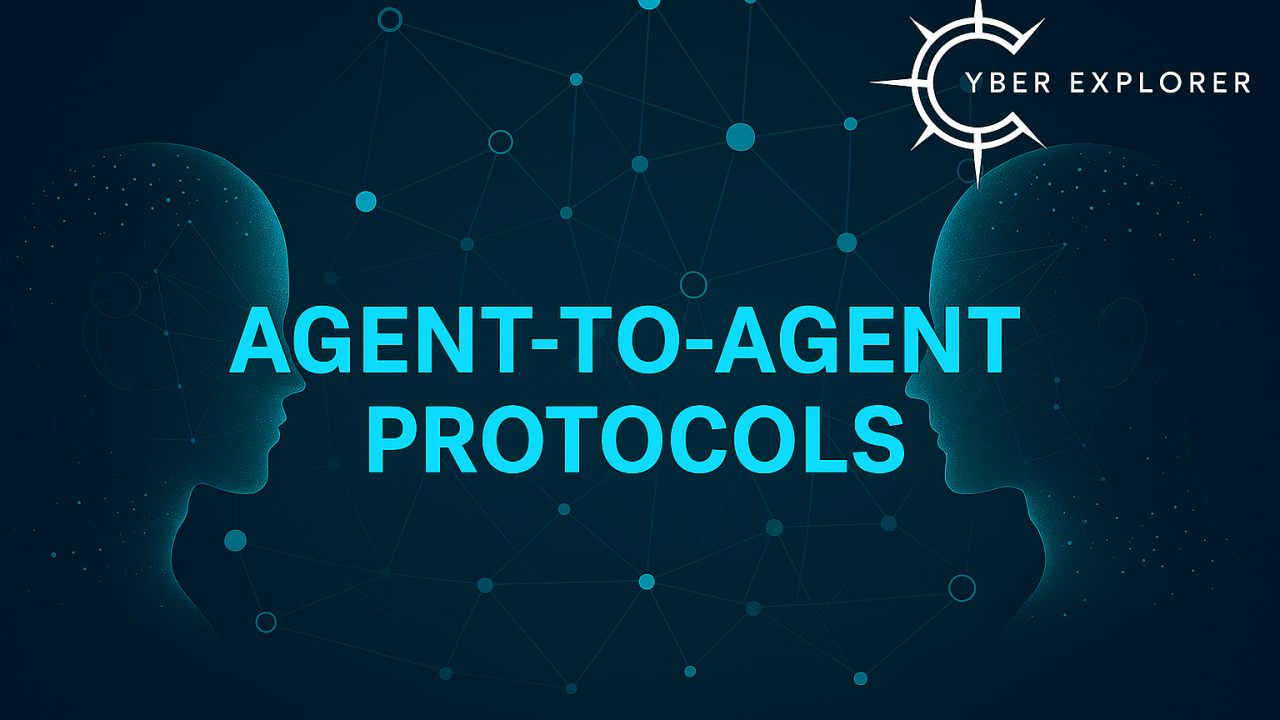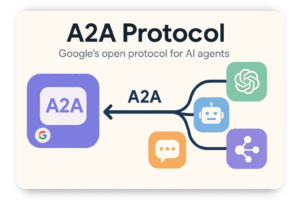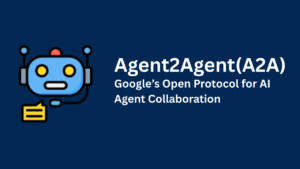Google AI Introduces Agent Payments Protocol (AP2)
As artificial intelligence moves from helpful chatbots to autonomous agents that can act on our behalf, one of the thorniest remaining problems has been payments: how does an AI buy something for you in a way that’s secure, auditable, and aligned with your intent? On September 16–17, 2025, Google Cloud answered that question with a public launch of the Agent Payments Protocol (AP2) — an open, standards-style protocol designed to let agents transact reliably across merchants, payment networks, and wallets while proving user intent and preserving accountability. Google Cloud+1
This article explains what AP2 is, why it matters, how it works at a technical and practical level, who’s backing it, and the major implications and challenges for consumers, merchants, banks and regulators.
The problem AP2 is trying to solve
Online payments today assume a human is behind the final “Buy” button. That assumption breaks when an autonomous agent — a shopping agent, travel planner, or enterprise procurement bot — constructs a cart, negotiates terms, and submits a transaction without a human physically present to click or confirm. Without a trusted way to show the merchant and payment network that the user actually authorized a purchase, we face three big risks:
-
Authorization: How can a merchant be sure an agent had permission to complete this specific purchase?
-
Authenticity / intent: How can a merchant or issuer know that the agent’s request really reflects the user’s expressed intent and not a hallucination or error?
-
Accountability: If the purchase is fraudulent or wrong, who is responsible — the user, the agent developer, the agent platform, or the merchant? ap2-protocol.org
These questions create a trust gap that could stall agent-enabled commerce. AP2’s purpose is to engineer trust into agentic payments so agents can transact without breaking the assumptions payments systems rely on today. ap2-protocol.org
What AP2 is — and what it isn’t
At its core, AP2 is an open protocol and specification — an extension of existing agent protocols (notably Agent2Agent, or A2A, and Model Context Protocol, MCP) — designed to standardize how agents express, prove and record payment authorization and context so traditional payment players (issuers, networks, gateways, merchants) can accept agent-driven purchases. It is explicitly non-proprietary and aims for broad interoperability rather than a closed ecosystem. ap2-protocol.org+1
Important clarifications:
-
AP2 is not a payment rail. It does not replace Visa, Mastercard, bank networks, UPI or crypto rails; it is a protocol layer that sits above or alongside those rails and signals intent, context and verifiability to existing players. ap2-protocol.org
-
AP2 is not limited to cards — while early support emphasizes card “pull” flows, its roadmap and partners indicate future support for push rails (instant bank transfers), wallets, and digital currencies / stablecoins. ap2-protocol.org+1
Who’s on board (and why that matters)
Google Cloud launched AP2 with an unusually broad list of launch partners: more than 60 companies across payments, wallets, ecommerce platforms, fintechs, blockchain projects and enterprise software. Major names publicly included Mastercard, American Express, PayPal, Coinbase, Adyen, Checkout.com, Crossmint, Coinbase, Ant International, various banks and many platform vendors. That industry breadth is an explicit signal: AP2 is meant to be a foundational, cross-industry standard, not a Google-only play. Google Cloud+1
Why the partner mix matters:
-
Payments incumbents (Mastercard, Amex, PayPal) bring trust, risk models and dispute-handling experience that are crucial if agents start submitting transactions. Their involvement suggests AP2 was designed with real-world risk and chargeback patterns in mind. Google Cloud
-
Crypto and stablecoin firms (Coinbase, BVNK, Crossmint, MetaMask, Mysten Labs) are present too, reflecting a view that programmable digital assets and token rails will be part of agentic commerce — particularly for machine-to-machine payments and microtransactions between agents. Google Cloud+1
-
Platforms and gateways (Adyen, Checkout.com, Airwallex) are needed to bridge merchants and rails so agent-originated payment messages actually settle.
The broad support increases the chance AP2 can become a real, adopted standard rather than a niche experiment. But adoption will still require merchants, issuers and regulators to integrate and accept the new payloads and claims AP2 introduces. Google Cloud
How AP2 works — the technical heart
AP2 builds trust using cryptographic Verifiable Credentials (VCs) and well-defined transaction roles. The AP2 documentation describes three primary credential types that are central to how identity, intent and payment context are proven:
-
Intent Mandate — authorizes an agent to make purchases for a user under predefined constraints (e.g., “book flights under $1,200 for travel between Dec 1–10”). This is for “human-not-present” or delegated authority scenarios.
-
Cart Mandate — a cryptographically signed confirmation of a specific cart (items, prices, totals) attested by the user — useful in “human-present” scenarios where a user reviews and signs off on the exact purchase.
-
Payment Mandate — a credential shared with the payment network or issuer indicating agent involvement and whether the transaction is human-present or human-not-present, helping issuers apply appropriate fraud and risk rules. ap2-protocol.org
These credentials produce a non-repudiable, tamper-evident trail that helps merchants and issuers validate both the user’s authorization and the agent’s claimed actions. The protocol also maps to existing agent protocols (A2A and MCP), meaning agents can carry contextual data, negotiate offers, and then attach verifiable payment credentials when they execute a checkout. ap2-protocol.org+1
x402 and crypto integration
AP2 references integration points with modern blockchain-based rails (sometimes referenced as x402 in the docs and blog), meaning agents can optionally use tokenized assets or stablecoins for settlement and machine-to-machine value exchange. Several partners — Coinbase, BVNK, Crossmint, MetaMask — signalled interest in these use cases, where instantaneous, programmable settlement or agent-to-agent micropayments could be useful. Google Cloud+1
Practical flows — from intent to settled payment
A simplified example shows the protocol in practice:
-
User delegates: Alice gives a travel agent (an AI assistant) an Intent Mandate: “Find the cheapest round-trip to Lisbon in August, under $1,200, nonstop only.” The mandate is signed and stored as a VC. ap2-protocol.org
-
Agent acts: The agent searches, builds a cart, and presents a Cart Mandate to Alice for a human-present confirmation (if required). Alternatively, if the Intent Mandate covered human-not-present purchases, the agent may proceed. ap2-protocol.org
-
Agent requests payment: The agent issues a Payment Mandate to the merchant and payment gateway, indicating the VC-backed proof of authorization and whether the transaction is human-present or not. The merchant uses AP2-aware gateway logic to route the payment, apply risk rules, and request settlement. ap2-protocol.org
-
Settlement / audit trail: The resulting transaction includes cryptographic evidence linking the charge to Alice’s signed intent; if a dispute occurs, the ledger of VCs provides a clear, auditable trail for resolution. ap2-protocol.org
This approach gives all parties — users, merchants, issuers — the evidence they need to assess risk and resolve disputes, which is the main barrier AP2 targets.
Why the industry is interested (and also worried)
Interest: AP2 promises to unlock convenience-driven commerce: agents that can autonomously find deals, negotiate renewals, subscribe to services, or micro-pay for services on behalf of users. For enterprises, agentic procurement workflows could streamline B2B purchases while preserving auditable controls. For consumer platforms, the ability to accept agent-originated payments could increase conversion and open new microtransaction business models. Google and many partners frame AP2 as the missing trust layer for the “agent economy.” Google Cloud+1
Concerns: The protocol does not remove regulatory, privacy, fraud or legal questions:
-
Fraud and dispute models will need updating: issuers and merchants must decide how to apply liability when an agent acts incorrectly. AP2 provides additional evidence, but legal frameworks may need to catch up. ap2-protocol.org
-
Privacy: Verifiable Credentials can minimize data exposure, but who holds keys, how revocation works, and what metadata is shared are all sensitive design choices. AP2’s docs emphasize privacy-by-design, but implementation details will matter. ap2-protocol.org
-
Standardization & competition: Having Google lead a protocol helps speed iterations, but industry players will scrutinize governance, extension mechanisms, and whether alternative or competing standards emerge. Broad partner buy-in reduces this risk, but it doesn’t eliminate it. Google Cloud
Early use cases and what to watch
Short-term, AP2 is likely to appear in:
-
Agent-enabled retail checkout (AI assistants buying goods/services for users with prior mandates). Google Cloud
-
Agentic subscriptions and renewals where intent is templated but time-bound approvals are needed. ap2-protocol.org
-
Machine-to-machine (M2M) microtransactions between agent services using token rails or stablecoins for instant settlement. Google Cloud
-
Enterprise procurement agents that follow policy-driven mandates to buy software licenses, cloud credits, or other services with audit trails. Google Cloud
Watch for merchant adoption (plugins in ecommerce platforms), issuer acceptance (changes to risk scoring and chargeback workflows), and regulatory guidance on agent delegation and consumer protections.
Regulatory and consumer-protection angles
AP2’s design — which emphasizes verifiable user intent and auditable trails — helps address regulatory concerns by producing evidence that can be inspected in disputes. But law rarely moves as fast as tech. Regulators will want clarity on:
-
Consumer consent standards (what type/form of mandate is legally sufficient?).
-
Liability allocation when agents misinterpret instructions.
-
Anti-money-laundering (AML) and KYC when agents can use tokenized assets.
-
Data minimization and revocation so users can rescind agent authority and stop future charges.
Early engagement between standards groups, regulators and industry (which AP2’s public launch appears to encourage) will be pivotal. Google Cloud+1
Bottom line — an enabling layer, not a finished marketplace
Google’s AP2 is an ambitious, pragmatic attempt to make autonomous agents compatible with the world of regulated payments. By combining verifiable credentials, role-based architectures and an open approach with a diverse partner set, AP2 lays out a plausible blueprint for trustworthy agent-driven commerce. If merchants, issuers and regulators adopt and integrate the standard, consumers and enterprises may soon delegate many more buying tasks to agents with confidence. Google Cloud+1
That said, AP2 does not magically fix legal, privacy, or business-model questions — it supplies a technical substrate that makes those conversations productive. The next 12–24 months will tell whether AP2 becomes a broadly adopted standard or one of several competing approaches to agentic payments. Expect pilot projects, gateway integrations, and experimental stablecoin rails to surface quickly, with real consumer-grade deployments following only after issuers and regulators are satisfied with the evidence and liability models. PYMNTS.com+1
How developers and businesses can get involved today
Google and the AP2 working group published documentation, code samples and reference implementations on GitHub. Developers building agents, gateways, payment orchestration services, or merchant plugins can:
-
Read the AP2 specification and core concepts. ap2-protocol.org
-
Try the sample flows (human-present and human-not-present) to understand how mandates and VCs are issued and verified. ap2-protocol.org
-
Collaborate in the ecosystem: AP2 is explicitly pitched as an open standard, and contributions from wallets, gateways and banks are critical. Google Cloud
Final thoughts
AP2 is an example of infrastructure-first thinking: solve the verification and accountability problems before asking consumers to hand agents unchecked financial power. That approach increases the odds that agent-enabled payments scale safely and inclusively. The protocol’s broad partner list and explicit integration with both legacy payment systems and modern token rails make it a credible contender to become the trust layer for agentic commerce — provided the industry, regulators, and consumers accept its premises and the implementations prove robust in real-world disputes. Google Cloud+1
Sources & further reading
-
Google Cloud blog: “Announcing Agent Payments Protocol (AP2).” Google Cloud
-
AP2 official documentation and specification. ap2-protocol.org
-
Axios coverage: “Google’s new plan to build trust in AI agents as personal shoppers.” Axios
-
PYMNTS: “Google Debuts Payments Protocol for Agentic Commerce.” PYMNTS.com
-
PayPal developer blog: “AP2 — Building Verifiable Trust for Agent-Driven Payments.” PayPal Developer
For quick updates, follow our whatsapp channel –https://whatsapp.com/channel/0029VbAabEC11ulGy0ZwRi3j
Google’s Gemma 3 270M — the tiny titan for on-device and edge AI







